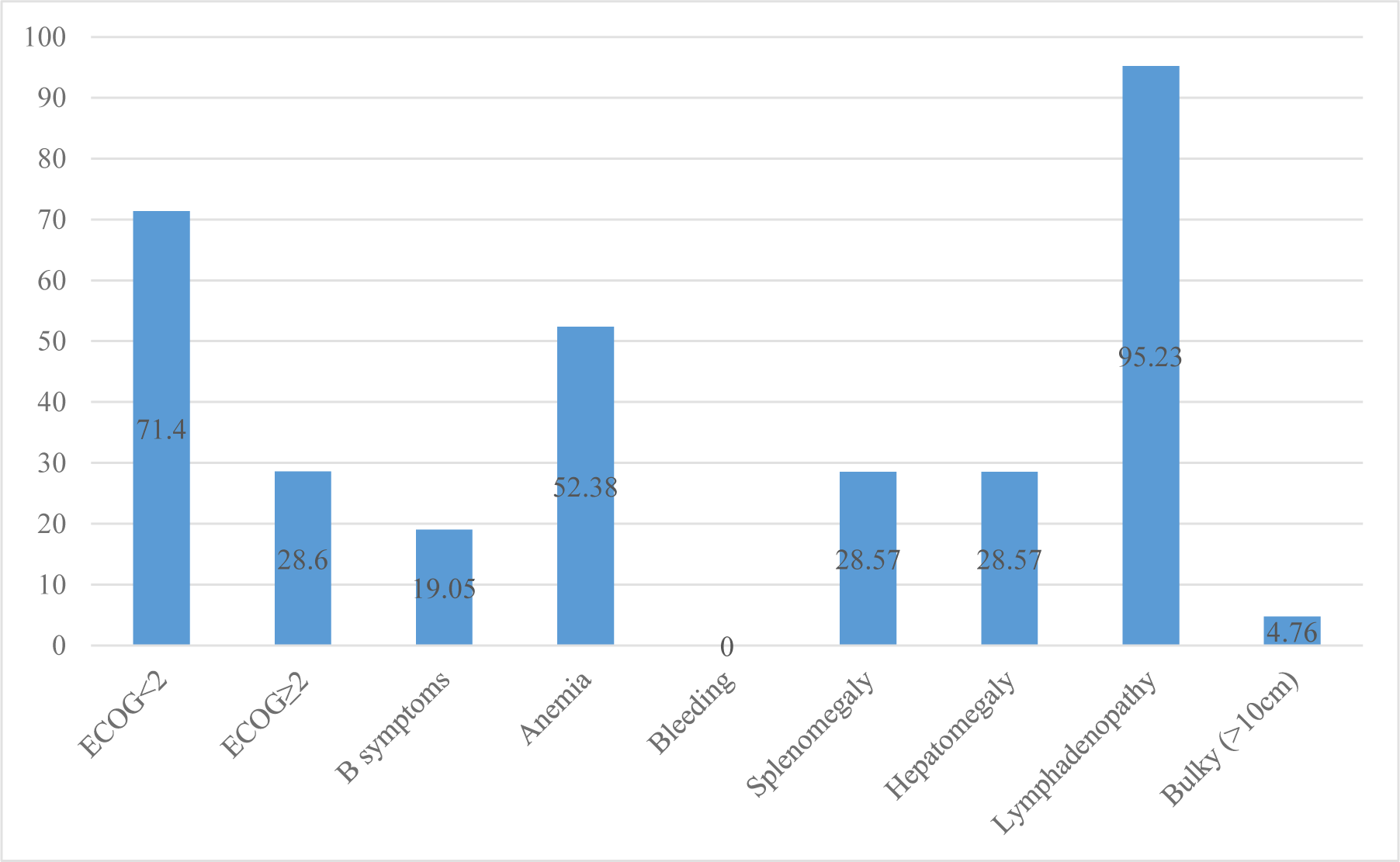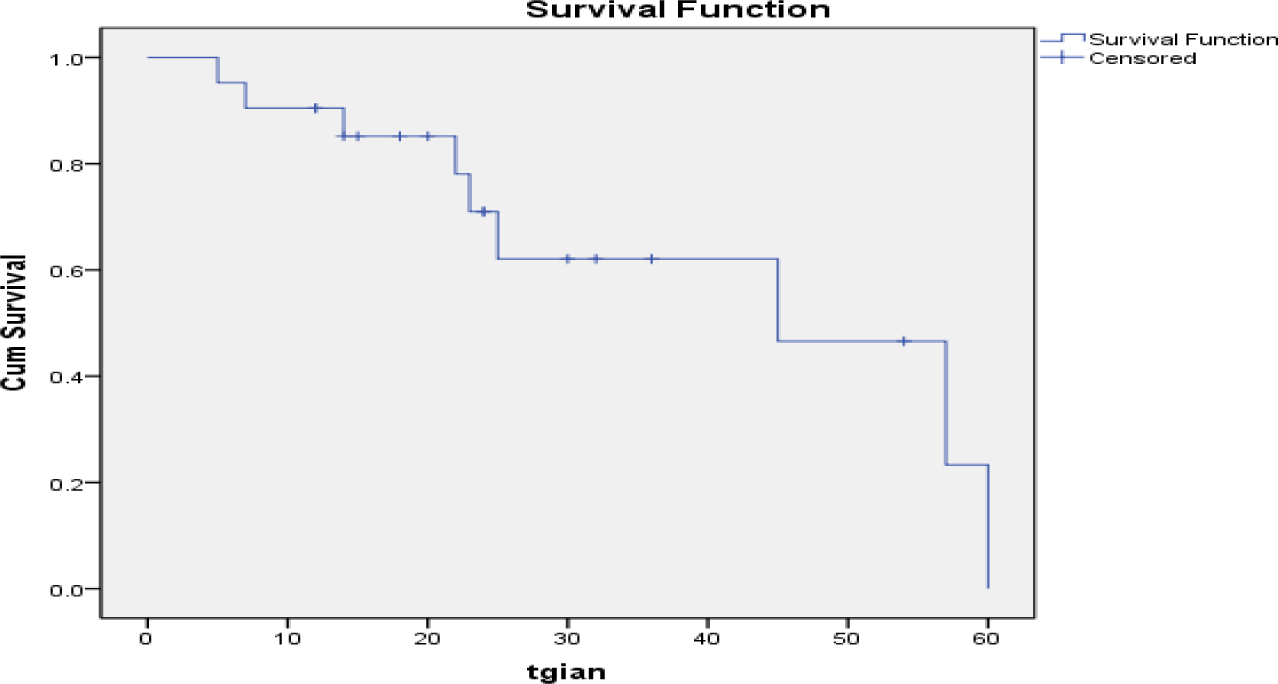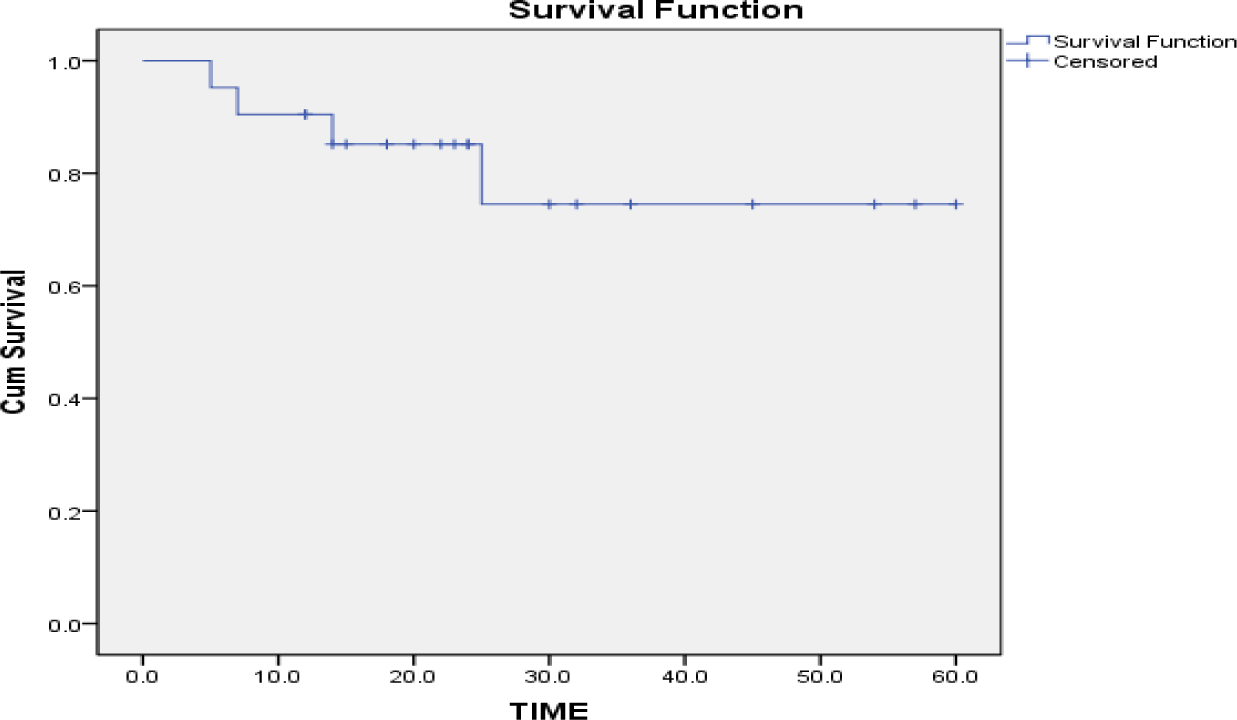1. INTRODUCTION
Non-Hodgkin lymphoma (NHL) is the most common hematological malignancy. The risk of NHL rises with age, from 0.15 (1 in 658) from birth through age 39 years to 1.25 (1 in 80) from age 60 to 79 years. Moreover, the incidence of NHL has been increasing by 1–2% annually over the past 2 decades, most dramatically in people over 60 years old [1]. Accordingly, NHL has become an increasingly important cause of morbidity and mortality in the aging population. Age greater than 60 years is a recognized adverse prognostic factor for NHL [2]. Several factors may account for this finding [3]:
-
Differences in pathophysiology by age group.
-
Presence of co-morbid illnesses which are more common in the elderly.
-
Altered pharmacokinetics in the elderly and poorer host tissue tolerance.
-
Changes in bone marrow hematopoietic reserve and microenvironment with increasing age, which may lead to increased treatment-related myelotoxicity.
-
Higher rate of treatment-related complications, such as infections and cardiovascular events.
-
Reluctance of primary physicians to refer older patients to hematologists and medical oncologists and the reluctance of treating physicians to administer full doses of chemotherapy and aggressive protocols [4]. An estimated 23% of aged patients receive reduced and possibly inadequate doses of chemotherapy simply because of age [5].
Over the past two decades, significant progress was achieved in the development of new therapies for NHLs. Perhaps the most important advance is the addition of rituximab. Rituximab is a chimeric monoclonal antibody directed against the B-cell antigen CD20. It was the first targeted immunotherapy drug used to treat lymphoma. R-CHOP (rituximab with cyclophosphamide, doxorubicin, vincristine and prednisone) has been the initial chemotherapy of choice with most of NHLs for fit patients. However, the utility of doxorubicin is limited by cumulative, dose-related, progressive myocardial damage that can lead to congestive heart failure (CHF). Age is an important risk factor for doxorubicin-related CHF, with patients over 65 years of age experiencing a higher incidence of CHF when compared with patients younger than 65 years [6]. In patients with known cardiac history, omission of anthracyclines is reasonable and R-CVP (rituximab with cyclophosphamide, vincristine and prednisone) provides a competitive complete response rate [7].
However, little information is available on the outcomes of R-CHOP and R-CVP in treatment of NHL in the elderly patients in Vietnam. For these reasons, a retrospective analysis of these patients was perfomed at the Blood Transfusion and Hematology Hospital, Ho Chi Minh city.
2. PATIENTS AND METHODS
After receiving institutional review board approval, we retrospectively analyzed all patients aged ≥ 60 years were newly diagnosed with CD20-positive NHL at our institution between 01/2013 and 01/2018.
The definitions of tumor response were in accordance with the International Working Group Criteria [8]. We used three categories: Complete Response: CR; Partial Response: PD, Progresson of Disease. All patients were staged using the Ann Arbor staging system and were risk stratified according to the original International Prognostic Index (IPI) [9].
Event-free survival (EFS) was defined from the date of diagnosis to disease relapse or death due to lymphoma. Overall survival (OS) was defined from the date of diagnosis to death from any cause.
Statistical analyses were performed using R 3.6.1. Patients’ demographics and clinical characteristics were expressed as proportions and compared across treatments using 2-tailed Chi-squared tests. Treatment efficacy was expressed as proportions of CR, PR and PD, and compared across treatments using 2-tailed Chi-squared tests with 95% confidence intervals (CI). P values < 0.05 were considered statistically significant.
Diagnosis of NHL in patients ≥ 60 years of age based on lymph node biopsy, staging by Ann Arbor system and risk classification by IPI
Treatment with R-CHOP or R-CVP regimens
Follow-up and evaluation of treatment response using BTH’s algorithm
Evaluate the clinical and biology features of NHL in elderly patients.
Assess treatment response after completing 6 cycles of R-CHOP/ R-CVP.
Calculate the DFS and OS.
Determine the incidence of adverse events during treatment of R-CHOP/R-CVP.
3. RESULTS
During the period between January 2013 and January 2018, 21 patients were identified. The age of diagnosis ranged from 60 to 80 years with a median of 68.9 years. Six patients (28.6%) were male; male to female ratio was 1:2.5.
| Median | Maximum | Minimum | |
|---|---|---|---|
| Hb (g/dL) | 9.6 | 14.2 | 6,9 |
| PLT (x 109/L) | 155 | 390 | 60 |
| WBC (x 109/L) | 6 | 19.6 | 1.8 |
Concerning the histologic types of the disease, the proportions of diffuse large B cell lymphoma (DLBCL), mantle cell lymphoma (MCL) and follicular lymphoma (FL) were 71%, 19% and 10%, respectively. All patients were staged using the Ann Arbor staging system. Most of patients had stage II (43%) and IV (48%) disease. No one had stage I and only 9% of those had by definition Ann Arbor stage III disease. Most of patients had intermediate-risk in this study (66.7%) according to IPI classification.
-
- Four patients (19%) were treated with R-CHOP and 17 others (81%) with R-CVP. R-CHOP is only indicated in patients less than 65 years old. R-CVP could be used in both groups, in which it was favored using of those of aged ≥ 65 with ratio 3:1.
-
- Twelve patients (57.1%) presented with one or more additional conditions. Over half of them had more than 2 comorbidities. There were 7 patients (58.3%) with history of cardiovascular (including hypertension, coronary diseases, heart failure and heart valve disease), 2 patients (16.7%) with chronic respiratory diseases (asthma, chronic obstructive pulmonary disease), 4 patients (33.3%) with chronic kidney disease and 5 patients (41.7%) with other problems (i.e., diabetes, chronic hepatitis, peptic ulcer). R-CVP was the selection for all patients with cardiac history.
| R-CHOP or R-CVP | |
|---|---|
| CR | 16 (76.2%) |
| PR | 3 (14.3%) |
| PD | 0 (0%) |
| Death during treatment | 2 (9.5%) |
| Regimens | |||
|---|---|---|---|
| R-CHOP N | R-CVP N | ||
| Response rates | CR | 2 (50%) | 14 (82.3%) |
| PR | 1 (25%) | 2 (11.8%) | |
| Death | 1 (25%) | 1 (5.9%) | |
| N | 4 | 17 | |
| P-value = 0.23 | |||
| Risk | ||||
|---|---|---|---|---|
| Low | Intermediate | High | ||
| Response rates | CR | 3 (100%) | 12 (85.7%) | 1 (25%) |
| PR | 0 | 2 (14.3%) | 1 (25%) | |
| PD | 0 | 0 | 0 | |
| Death | 0 | 0 | 2 (50%) | |
| N | 3 | 14 | 4 | |
| P-value = 0.028 | ||||
At a median follow-up of 26 months (range, 5 to 60 months), 9 patients (n = 21.43%) had an event. All patients achieved response. Of patients who achieved complete response (n=17), 4 patients (25%) had a relapse and are still alive, 1 patient died from pneumonia. Of patients who achieved partial response (n=4), 1 patient (33.3%) had a relapse and are still alive, 1 patient died from secondary lung cancer.
Median follow-up was 45 months (CI 95%, 18.2 – 71.8 months). EFS at 26 months was 60%.
Four deaths were recorded in this study accounting for 19.05%. Two patients had died during treatment due to sepsis and cardiac complication, two deaths occurred after the end of treatment because of other causes that didn’t relate to NHL. The mean OS was 48.7 months (38.7 – 58.7 months). OS at 26 months was 75%.
Two deaths occurred during treatment (9.5%), one patient from heart failure and another from sepsis. Anemia, neutropenia febrile and sepsis were the most common complications which were the consequence of myelosuppression due to chemotherapy. Side effects such as allergy, vomiting and nausea were usually transient and rarely happened. There was no difference in drug toxicity between two regimens.
4. DISCUSSION
The average age in this study was 68.9 years, which is equivalent to the average age in Coiffer’s study (69 years, n = 202) [10], Thomas’s study (69 years, n = 267) [11], and the study of Le Thanh Tu (69 years, n = 69) [12]. Age is a key factor which determine the treatment regimen as well as the prognosis. According to a study on disease patterns, sixty-one percent patients aged over 70 years have at least one additional disease, this figure for those less than 60 year olds is just 20% [13]. More than half of patients in our study (12/21 patients) had a history of chronic disorders, in which cardiovascular predominated (7/12 patients), thereby reducing the funtional status, incresing the likelihood of drug toxicity as well as the risk of death during treatment. Therefore, in elderly patients, there is a tendency to be selected for R-CVP regimen due to concerns about increased cardiotoxidity of anthracyclins. We found that the age of patients to decide between R-CHOP and R-CVP was 65 years. R-CHOP was only applied to patients under 65 years of age, while R-CVP was preferred for aged patients, poor physical condition or cardiovascular diseases. So that our study had the predominant number of patients treated with R-CVP regimen (81%).
In the current cohort, the majority (95.23%) of the patients presented with lymphadenopathy, consistent with the natural progression of the disease and was also the most common reason for patients to be examined. The proportion of patients who had the ECOG >=2 points at hospitalization was 28.6%, similar to other studies (this figure in study of Coiffer. B (n = 202) and Thomas M. Habermann (n = 267) were 22% and 14%, respectively) [10, 11]. The percentage of advanced disease (stage III/IV) in this study is lower than other studies (57% compared with 79% for Coiffer. B and 75% for Thomas M. Habermann) [10, 11]. Thus, the figures for symptoms which have the prognostic value in our cohort are equal to or lower than other reports. These results could be fluctuated depending on methods in which they used to evaluate.
DLBCL was the most common (71%), next to mantle cell lymphoma (19%) and lastly follicular lymphoma (10%). This rates were similar to the study of O. Bairey (n = 109) and Francesco Marchesi (n = 73) [12, 14], in which the proportions of DLBCL were 61% and 87.6%, respectively. This distribution is consistent with classification of NHL in general and NHL in aged patients in particular.
More than three-fourth of our patients (n = 16, 76.2%) had a complete response. EFS and OS at 26 months was 60% and 75%, respectively. Some similar studies have also demonstrated the superior efficacy of Rituximab-based regimens on aged patients, both for post-treatment and long-term follow-up.
We found no statistically significant difference between R-CHOP and R-CVP in response rates, while the risk classification plays a very important role in the results of treatment. The higher the patient’s risk score, the lower the response rate and the higher the mortality rate. However, due to the small sample size, the small number of deaths and the short average follow-up, our study does not show the correlation between risk groups and patients’ survival.
One study demonstrated that Rituximab did not increase the toxicity of therapy in older patients [12]. The main side effects of Rituximab are anaphylaxis, allergy or nausea, but very rarely due to precautions with hydrocortisone and antiemetic drugs. However, the older group of patients in our study has many associated diseases, the overall decline should increase the toxicity of the drug as well as the risk of death. Treatment complications were reported in more than 90% of patients in our study, most of which came from the effects of myelosuppression after chemotherapy. More than half of them are infections-related complications, especially sepsis and pneumonia in the elderly. There was one patient using R-CVP regimen who died as cardiotoxicity.
4. CONCLUSION
R-CHOP and R-CVP are effective, prolong survial and are relatively safe in treating NHL in elderly patients: 76.2 % achieved complete response; EFS and OS at 26 months were 60% and 75%, respectively. In patients with known cardiac history, omission of anthracyclines is reasonable and R-CVP provides a competitive CR rate. Rituximab’s side effects were negligible, most treatment complications were the consequence of myelosupression, treatment-related mortality accounted for less than 10%.












